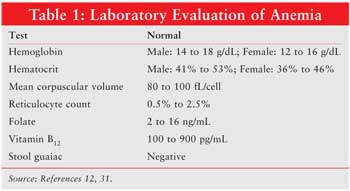


High hemoglobin has been associated with various safety concerns, including elevated blood pressure, iron deficiency, blood clots, heart dysfunction, and stroke.Įlevated hemoglobin has several causes, but it’s usually the result of these two mechanisms: Ī study of individuals with chronic mountain sickness, which is due to a combination of high altitude residency and poor lung function, showed that long-term survival with hemoglobin levels above 20 g/dL is not possible. The signs resemble the signs of severe anemia (low hemoglobin).Īdditionally, because of the poor blood flow, the risk of blood clots increases substantially.
#LOW HEMATOCRIT AND HEMOGLOBIN DURING CHEMO SKIN#
This is often manifested as bluish skin discoloration and impaired mental function resulting from compromised brain circulation. Once hemoglobin reaches above 18 g/dL, the blood thickness reaches a level that can impair blood circulation in small blood vessels, and as a result not enough oxygen is reaching the tissues. Above this, the relation becomes exponential – a small increase in hemoglobin results in a larger increase in blood thickness. The relationship between hemoglobin and blood thickness is linear up to 16 g/dL. Polycythemia happens when there are more red blood cells in the blood and therefore the blood becomes thicker (more viscous). When accompanied by an increase in red blood cells, high hemoglobin can be a sign of a condition called polycythemia. That’s why a result that is slightly higher may not be of medical significance. In addition, normal ranges may differ slightly between different populations. Doctors will usually interpret this test, taking into account a person’s medical history and other tests, such as red blood cells (RBC), hematocrit, and red blood cell indices.Īlso, there is some lab-to-lab variability in normal ranges due to differences in equipment, techniques, and chemicals used. Ī single test isn’t enough to make a diagnosis. Usually, hemoglobin (Hb) is considered high if it’s above the normal range of 15.5 g/dL in women or 17.5 g/dL in men.

In this post, we will go over the symptoms of high and low hemoglobin and health issues and diseases that increase or decrease its levels. Both low and high levels can adversely affect our health. Hemoglobin is an essential part of red blood cells that delivers oxygen to all parts of the body.
#LOW HEMATOCRIT AND HEMOGLOBIN DURING CHEMO FULL#
A plus sign next to the number “” means that the information is found within the full scientific study rather than the abstract. If you feel that any of our content is inaccurate, out-of-date, or otherwise questionable, please leave a comment or contact us at that each number in parentheses is a clickable link to peer-reviewed scientific studies.

Our goal is to not have a single piece of inaccurate information on this website. They are continually monitored by our internal peer-review process and if we see anyone making material science errors, we don't let them write for us again. Our science team must pass long technical science tests, difficult logical reasoning and reading comprehension tests. Our science team is put through the strictest vetting process in the health industry and we often reject applicants who have written articles for many of the largest health websites that are deemed trustworthy. Our team comprises of trained MDs, PhDs, pharmacists, qualified scientists, and certified health and wellness specialists.Īll of our content is written by scientists and people with a strong science background. We are dedicated to providing the most scientifically valid, unbiased, and comprehensive information on any given topic. We believe that the most accurate information is found directly in the scientific source. SelfHacked has the strictest sourcing guidelines in the health industry and we almost exclusively link to medically peer-reviewed studies, usually on PubMed.


 0 kommentar(er)
0 kommentar(er)
